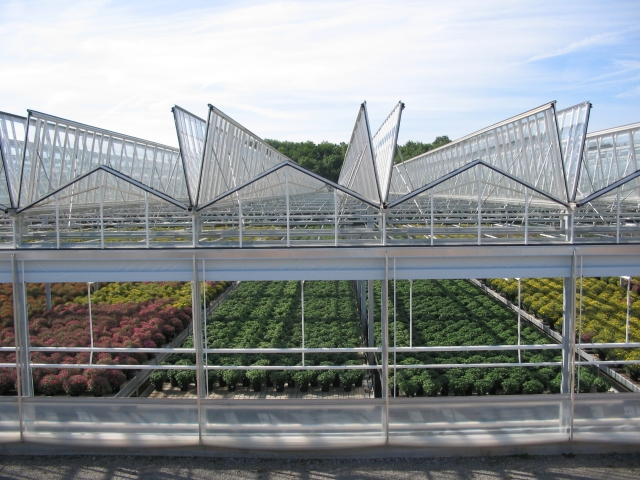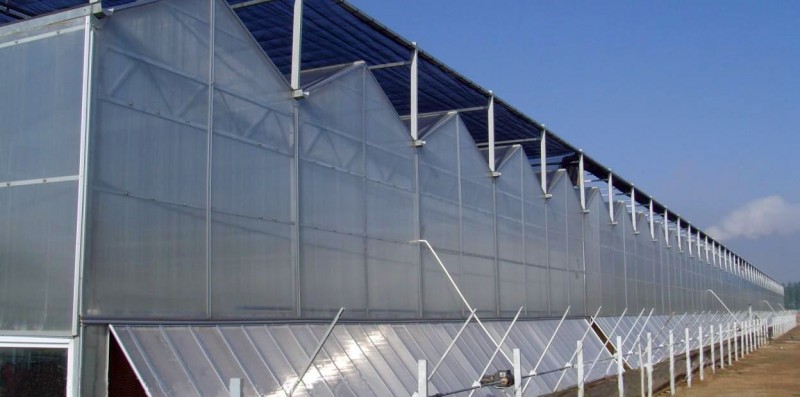How to Choose the Right Greenhouse Covering Material
Greenhouses are man-made facilities designed to control the temperature needed for plant cultivation. Typically, they are separated from the external environment by a covering layer, creating a relatively closed environment that promotes plant growth. The choice of covering material significantly influences the greenhouse temperature, the quality and quantity of the cultivated plants, and the operating costs for the producer. It also has substantial implications for the local environment. In China, thin films are the primary greenhouse covering material. However, the market often only focuses on the thickness of the film, paying less attention to its performance. Glass and polycarbonate greenhouses are more frequently used in scientific research or high-value flower production.

Plastic film: Current State of Greenhouse Covering Materials
In North China, daylight greenhouses require insulation material covered in the winter to meet temperature needs. Currently, domestically produced polyvinyl chloride (PVC) plastic film is the most widely used in the north. Its primary advantages are its low cost, low maintenance, and simple installation. The corresponding greenhouse components are also relatively inexpensive, making PVC popular for vegetable and flower cultivation. However, it does have drawbacks, such as a short lifespan, poor insulation, and intolerance to high-temperature differences. In the south, polyethylene (PE) is preferred, which is relatively more expensive than PVC but boasts better temperature resistance. Its downside is its lack of elasticity. Both types of films generally last for a year, resulting in higher environmental costs. Foreign-made plastic films, such as Greek PEP Lid Film and Israeli Ginegar Film, are widely used in China.
The Lid Film occupies approximately 70% of the market share in northern China. Its features include UV resistance and dustproof treatment. The film surface is treated with UV inhibitors and absorbers to prolong the film's lifespan effectively. The outer layer is also enhanced with hydrophobic treatment to reduce dust accumulation and moss growth. It has a high reflection rate and high refraction rate, with 53% of the refracted light entering the greenhouse as soft light, increasing the total amount of light reaching the plant surface throughout the day. The Lid film also has excellent insulation properties. Its EVA middle layer is a material that absorbs infrared rays, further enhanced with an infrared absorber, which can absorb infrared rays of 700-1500nm wavelength to prevent heat loss from the greenhouse and slow down the nighttime temperature drop. It also offers dustproof treatment and drip prevention. The film's inner layer contains a special chemical (a surfactant) to reduce the film's surface tension, preventing water droplet formation. The Lid film has a long lifespan, with options of two years, three years, or more, providing better economic benefits.
Israel's greenhouse film material uses advanced polyethylene (P.E.) film technology, reaching up to five-layer co-extrusion. Its structure includes an upper layer that provides UV protection, a middle layer that increases light transmittance, and a lower layer that facilitates droplet flow and long-wave radiation separation. With a thickness of 100-250 micrometers and a width of up to 16m, its lifespan can reach up to four years. The film color can be selected based on the specific needs of different crops, offering a variety of colors such as red, green, yellow, and white. For instance, red can be chosen for tomato cultivation and white for potato farming, with notable yield increases of 10% to 20% and 15%, respectively.

With the development of modern greenhouse construction, glass, and polycarbonate have started to be used more frequently in research bases or high-end flower production greenhouses, although they are rarely used in conventional agricultural production. In China, 5mm thick glass is commonly used as the greenhouse covering material. Glass's insulation performance lies between the plastic film and polycarbonate, but it stands out with the best light transmittance.
Glass is widely used in the construction industry in China and extensively employed in greenhouses in Europe, with the Netherlands boasting the highest number of glass greenhouses worldwide. The most significant advantage of glass greenhouses is their durability, with a lifespan extending over 20 years and providing a light transmittance of more than 90%. However, their downsides include poor insulation, fragility, and high construction costs.
Polycarbonate comes in three types: hollow, corrugated, and solid, with hollow being the most commonly used for greenhouse covering. Its advantages include impact resistance, durability, long service life, and excellent insulation performance. On the flip side, it carries a high construction cost, and the hollow parts are prone to accumulating moisture and dust.

In conclusion, choosing the right greenhouse covering material involves careful consideration of various factors, including the type of crops to be grown, the local climate, and the available budget. While plastic films offer a cost-effective solution, they might not provide the desired longevity or insulation. On the other hand, while glass and polycarbonate greenhouses offer excellent durability and insulation, they may come with higher construction costs. Therefore, it is crucial to strike a balance between the requirements and the available resources to select the most suitable greenhouse covering material.





